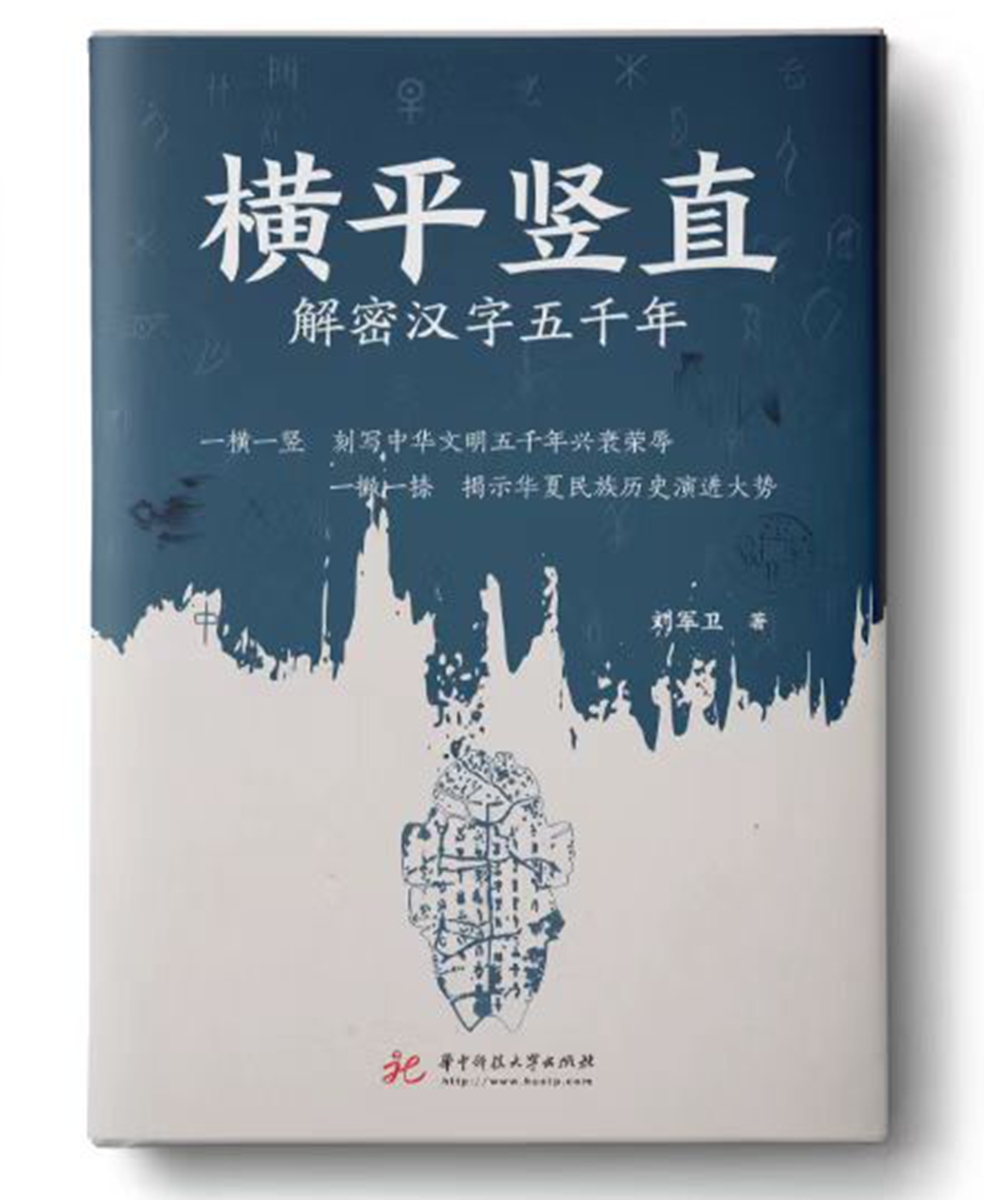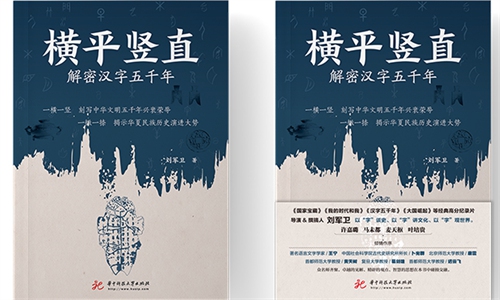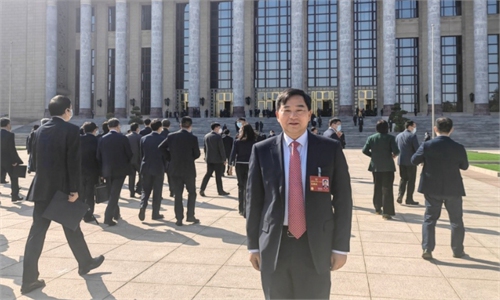
The cover design of writer Liu Junwei's 2023 book Hengping Shuzhi Photo: Courtesy of Liu Junwei
Hengping Shuzhi is a 2023 non-fiction book written by Chinese documentary director Liu Junwei. The title refers to the flat horizontal and straight vertical strokes used in Chinese characters, or hanzi, which have more than 5,000 years of history.
Liu finished the book 15 years after his documentary Five Thousand Years of Chinese Characters was first launched. Liu's passion for Chinese characters has only increased as experts have made further discoveries about this ancient writing system. He told the Global Times that the more he has traveled around the world, the more he has come to realize that Chinese characters are "the genes of Chinese culture."
'Ideographic nature'
Collecting comments from nearly 100 lovers of Chinese characters from China and countries such as Japan and Russia, the eight-chapter book presents the history, philosophy and artistry about Chinese characters by putting the subject in a global context.
Liu starts the book by placing ancient Chinese oracle bone inscriptions alongside cuneiform, Egyptian hieroglyph and the seal script of ancient India.
He writes that these ancient characters witnessed the birth of the world's four oldest civilizations. Yet today, only the Chinese writing system is still "alive," he told the Global Times, adding that Chinese characters "ideographic nature" helped ensure its inheritance.
Jiang Qiming, an expert in ancient Asian languages, told the Global Times that compared with phonographic writing systems that use signs such as letters, ideographic Chinese characters are "irreplaceable" and every single Chinese character has its own "composition logic" that has continuously changed over time.
"In Shang Dynasty (c.1600BC-1046BC) oracle bones inscriptions, the character de, or morality, was comprised of an ideogram representing walking on the left, while the right side was the early form of the character for 'straight,' representing the idea that one should walk straight, or be 'upright' in their behavior," Liu, told the Global Times.
Considering Chinese characters' evolutionary uniqueness, Liu wrote a whole chapter to discuss how their cultural power made an impact on Asian countries such as Japan and Vietnam.
Chu Nom was a writing system formerly used in Vietnam that was based on Chinese characters. Although due to French colonist invasion, Chu Nom hasn't been inherited as the country's official written language, but the characters that show both Chinese and Vietnamese wisdom once thrived around the 16th century and will live forever in Vietnamese literature classics such as The Tale of Kieu.
Quoting Naito Torajiro, a Japanese sinologist who described the China-Japan cultural relationship like "brine to tofu making," Liu said that Chinese characters once bonded Asian countries together into a "cultural circle."
"Chinese culture's influence is for sharing and can win people's hearts," the writer noted.
The beauty
If countries like Japan and Vietnam grasped the beauty of Chinese characters due to the Asian roots they shared with China, then the presentation of Chinese characters in calligraphy opened a door for Western countries to see the artistry of Chinese characters.
Inspired by Chinese poet Li Bai's Cao Shu Ge Xing (lit: Cursive writing poetry), Liu's sixth chapter explains the link between Chinese characters and Chinese calligraphy.
The Chinese calligraphy, with ink and brush was the world's notable art form that was inspired by written characters, Liu said.
"Chinese calligraphy is different from calligraphy in other languages due to its 'ambiance,'" Liu writes in the book.
Wang Jiming, a Chinese calligrapher, explained that this ambiance, known as yijing in Chinese, comes from the strengths of the strokes and curves of the characters and "frees Chinese characters from the context of just representing the meaning of a word."
Joël Bellassen, former inspector general in the field of Chinese Language Teaching at the Ministry of Education (France), once noted that Chinese calligraphy's charm was that "every single Chinese character is a unique symbol."
Practicing Chinese calligraphy for more than a decade, Michael Cherney, a US artist, told the Global Times that the art has brought him closer to understanding Chinese tradition in new ways.
"I think people tend to associate the word chuantong [tradition] with the Chinese culture of the past, but actually the rich Chinese culture is about inherence," Cherney told the Global Times.
As a film veteran, Liu has produced a lot of documentaries to tell stories about the country, such as China's commercial civilization and the industrial power of the country. Yet, the director said that his passion toward Chinese characters will continue as it will pass down to younger generations. He recommended that in future, Chinese characters powered by Chinese calligraphy should be promoted more in the nation's art education.
"We can always get nutrition from Chinese characters as long as we pass it down to the next generations. Such a tradition makes us Chinese," Liu noted.



